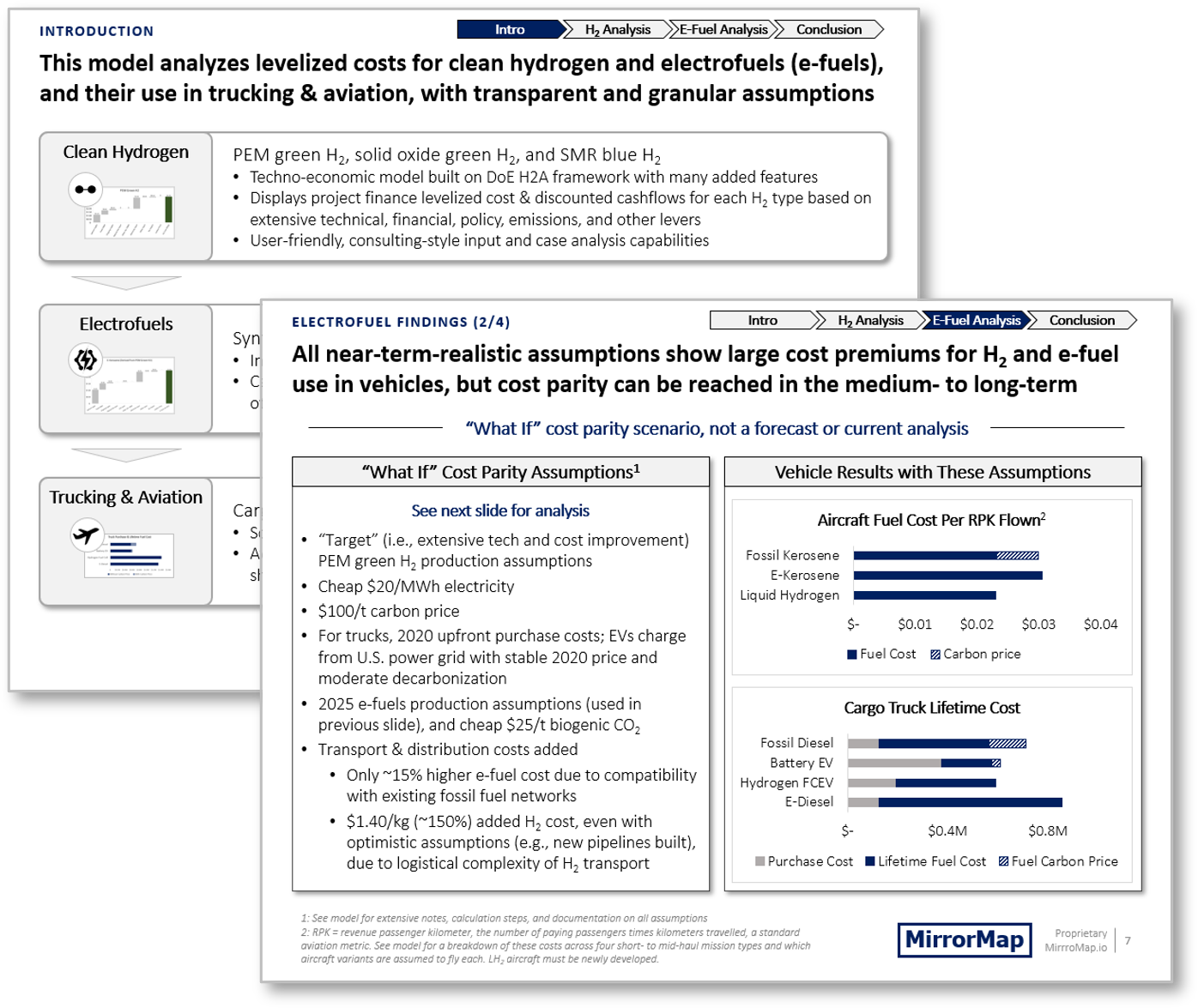Clean Fuel Models: Clean hydrogen model, e-fuels model, and takeaway analysis


Walkthrough of costs for producing green hydrogen, capturing carbon dioxide, synthesizing e-fuels from them, and cost comparison for end use of the fuels vs. fossil-derived fuels in transportation
Analysis of possible cost reductions at each technology step, and implications for the cost premium for transportation to run on clean vs. fossil fuels over the coming decades
Download "How E-Fuels Work"


Green hydrogen model, plus:
- Full cost build for CO2 direct air capture plant
- Purchase cost assumption options for piped CO2
- Full cost build for e-fuel synthesis
- Trucking & aviation operating costs using fossil or clean fuels
Narrated walkthrough of the model (note: some content has been updated)
Note: This model is a close-to-direct reflection of the DoE's H2A models (see model file for citations and details). The studies behind the H2A models are outdated, especially for solid oxide technology. The model is still useful as a framework and reference resource, but the $/kg results in the base version are not what I would reflect in more recent work. If using this model, I recommend updating the inputs with more recent data (e.g., IRENA 2020, Oxford Energy 2022 electrolyzer studies). Please contact info@mirrormap.io with any questions.
Download "Clean H2 Production Model"
Note: This is a Microsoft Excel file, which may trigger security alerts in some browsers. If your device's permissions don't permit the download, please reach out to info@mirrormap.io to have a copy emailed.
Not published on an open-source basis at this time
For more information, please contact info@mirrormap.io



